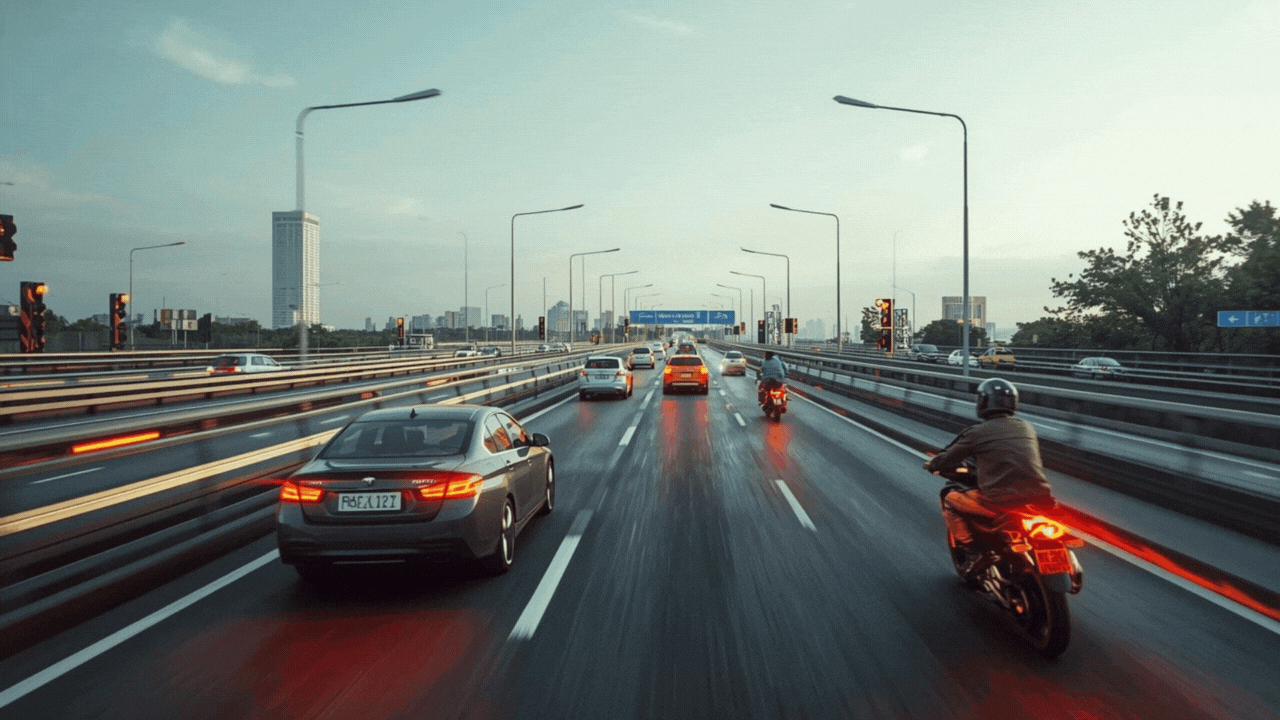Travel Guides & Articles
India’s Travel Economy Surpasses All Expectations With Exceptional Growth Milestones And Record Employment Driving A Bold Tourism Revolution

Monday, June 9, 2025
India’s Travel and Tourism industry has recorded explosive growth, shattering all expectations with record international visitor spend and tremendous economic impact in 2024. As tourism has become a leading driver in the country’s economy, India has become a world leader, establishing new growth benchmarks for prosperity. India’s historic growth in domestic and international travel marks a dynamic shift, with record job creation and innovative industry growth, making India a leading player in the international tourism sector. The historic growth within the sector is just one beginning, with its course ensuring a bold, prosperous future for travellers as well as for the country’s economic prosperity.
India’s Travel and Tourism Sector Soars to New Heights as International Visitor Spend and Economic Impact Break All Records
India’s Travel and Tourism sector has entered an unprecedented era of growth, according to the latest Economic Impact Research (EIR) released by the World Travel & Tourism Council (WTTC). The data reveals that international visitor spending surged to a record ₹3.1 trillion in 2024, surpassing the pre-pandemic peak of 2019 by 9%. This milestone marks a powerful resurgence in international travel demand and highlights India’s growing reputation as a global tourism powerhouse.
International Tourism Surges Past Pre-Pandemic Levels
Following several years of dependence on domestic travel during the pandemic recovery, India’s international tourism market has not only rebounded—it has exceeded expectations.In 2024, the sector’s overall economic contribution reached approximately ₹21 trillion, marking an impressive 20% growth compared to 2019. This positive trend is expected to continue, with no indication of slowing down. Projections indicate that Travel and Tourism’s economic footprint in India will grow to more than ₹22 trillion in 2025, with even stronger figures expected by 2035.
In 2024, the country welcomed 20 million international tourists—2.3 million more than the high recorded in 2019. This dramatic increase affirms renewed global confidence in India as a world-class destination, combining heritage, culture, and modern experiences to attract travelers from every continent.
Domestic Travel Remains a Powerhouse
While the return of international tourism has fueled new momentum, domestic travel remains the foundation of the country’s tourism ecosystem. In 2024, domestic visitor spend hit ₹15.5 trillion, an impressive 22% rise compared to 2019. This sustained domestic demand has not only kept the industry afloat during difficult years but has positioned it to thrive as international markets reopen.
The WTTC’s analysis further notes that India’s domestic market is crucial in diversifying tourism offerings, spreading economic benefits across regions, and fostering a more resilient tourism economy. The continued strength of local travel underlines the evolving preferences of Indian tourists, who increasingly seek luxury, sustainability, and unique cultural experiences.
Record-Breaking Employment and Economic Impact
The sector’s growth has also had a transformative impact on employment. In 2024, the Travel and Tourism sector played a pivotal role in generating nearly 46.5 million jobs in India, accounting for 9.1% of the country’s total workforce—marking a historic milestone. These jobs span a wide range of industries, including hospitality, transport, events, food services, and technology.
With AI and automation reshaping the future of work, the human-centric nature of the tourism industry offers vital employment opportunities, particularly for India’s young and educated population. WTTC projects that by 2025, the sector will support over 48 million jobs, and by 2035, this figure could soar to nearly 64 million, showcasing tourism’s potential as a long-term employment engine.
Business Travel Gains Momentum
India’s business travel segment is also experiencing robust growth. Combined domestic and international business travel spending hit ₹1.1 trillion in 2024, surpassing 2019 levels by 2.6%. This increase points to a resurgence in corporate travel, conferences, and MICE (Meetings, Incentives, Conferences, and Exhibitions) events, all of which play a critical role in attracting global investment and strengthening India’s economic position.
As India continues to rise as an economic and technological hub, the integration of business travel with tourism infrastructure offers immense potential. The WTTC urges stakeholders to further invest in business-ready facilities, seamless connectivity, and hospitality training to ensure continued competitiveness in this fast-evolving segment.
Infrastructure and Innovation Remain Key Drivers
To unlock the sector’s full potential, strategic investments in infrastructure remain essential. High-speed rail networks, smart mobility solutions, improved airport capacity, and regional connectivity are crucial to supporting continued growth. These developments not only ease movement for travelers but also enhance the overall tourism experience.
In addition, the rise of homegrown entrepreneurship, particularly in areas like luxury travel, eco-tourism, and experiential offerings, is helping India carve a unique identity on the global stage. Small and medium-sized enterprises (SMEs), which form the backbone of the industry, are fueling grassroots innovation and driving tourism growth in emerging regions.
WTTC emphasizes the importance of nurturing these enterprises through consistent policy support, access to capital, and digital tools that allow them to reach wider audiences. By empowering local communities, tourism can become a powerful catalyst for inclusive and sustainable development.
Future Forecasts Signal Continued Growth
Looking ahead, India’s tourism sector is on track to nearly double in size over the next decade. By 2035, the industry’s total economic contribution is expected to reach just under ₹42 trillion. The sector’s workforce is projected to expand significantly as well, providing employment to almost 64 million people.
International visitor spend is forecast to grow to ₹3.2 trillion in 2025, while domestic travel expenditure is set to climb to ₹16 trillion. These figures highlight India’s ability to capture growing demand from both local and global travelers and solidify its status as a tourism giant in the making.
A Call for Policy and Promotional Support
Despite these achievements, WTTC has raised concerns regarding recent cuts in funding for overseas tourism promotion. The organization calls on the Indian government to reconsider this move and instead match the sector’s remarkable performance with sustained policy and promotional backing.
Targeted marketing campaigns, streamlined visa processes, public-private partnerships, and consistent government engagement are vital to keep India competitive on the global tourism map. WTTC warns that without such support, the momentum gained over the past year could be difficult to maintain.
Conclusion
India’s Travel and Tourism sector has not only recovered from the pandemic—it has emerged stronger, more dynamic, and more influential than ever before. With record-breaking international visitor spend, unprecedented employment numbers, and unmatched economic impact, the industry is poised to play a central role in India’s economic narrative.
Tourism in India has broken all-time records with unprecedented growth, record-breaking visitor spend, and historic economic contributions making India one of the world’s leading tourism powers. India’s rapid growth marks a daring new era of prosperity and possibility for the country’s economy.
To ensure continued success, the WTTC urges unified action across government and industry leaders. With the right investments, consistent policy support, and focus on innovation and sustainability, India is positioned to become one of the world’s most powerful and resilient tourism economies in the years ahead.
Travel Guides & Articles
ITB India 2025 opens in Mumbai showcasing global travel

ITB India 2025, a leading B2B travel trade show organised by Messe Berlin, officially opened today in Mumbai, marking its third in-person edition as a premier B2B trade show and conference for the travel industry.
In a press statement, the organisers say that under the theme The Business of Experience: Curated Travel for Targetted Growth, the event brings together a global gathering of over 400 exhibitors, 600 high-caliber buyers and expects upwards of 8,000 trade visitors from sectors including MICE, leisure, corporate and travel technology.
The statement adds that the three-day event is co-located with MICE Show India and Travel Tech India, focussing on the rising demand for experience-driven travel with emphasis on wellness, culture, cinematic storytelling and adventure tourism.
The organisers say that Madhya Pradesh, Chhattisgarh and Andhra Pradesh have been named the Official Partner States of ITB India 2025, showcasing their diverse landscapes and rich cultural heritage.
It adds that these states are positioned as prime destinations offering authentic and immersive travel experiences beyond the usual tourist trails.
According to the statement, the exhibition features wide international participation across the entire tourism value chain. Key exhibitors include national tourism organizations, top MICE companies, online travel agencies, hospitality brands, travel tech providers and travel agents. Notable exhibitors such as Wonderful Indonesia, Visit Northern Finland, Ministry of Heritage and Tourism Oman, and several others underline the event’s global scope and comprehensive market reach.
The organisers say that running alongside the trade show is the ITB India Conference 2025, featuring more than 40 sessions across four curated tracks, Knowledge Theatre, MICE & Corporate, Travel Tech and Experiential Travel. Industry leaders will discuss India’s growing outbound travel market, innovations in MICE and corporate travel, the transformative role of AI and analytics in travel tech, and the shift towards experiential and purpose-driven travel.
“ITB India 2025 demonstrates the vitality of the Indian and South Asian travel markets, serving as an essential platform for global engagement and collaboration. This year’s edition places a strong emphasis on experience-led travel while fostering fresh opportunities for dialogue, innovation and partnerships across MICE, Corporate, Leisure and Travel Technology. We are delighted to welcome our Official Partner States, Madhya Pradesh, Chhattisgarh and Andhra Pradesh, whose participation brings India’s diversity and cultural depth to the forefront, further cementing ITB India’s position as a gateway to the future of travel,” says Darren Seah, Executive Director, Messe Berlin Asia Pacific and organiser of ITB India, MICE Show India and Travel Tech India.
Travel Guides & Articles
Breaking News Live Updates: IndiGo airline issues travel advisory for Leh, asks passengers to rebook or claim refunds

Orange weather warning for NCR
The India Meteorological Department (IMD) upgraded its weather warning to orange across Delhi and the National Capital Region, urging residents to prepare for heavy showers. Officials said the rainfall was being driven by the monsoon in combination with an unusually active western disturbance, which has also brought downpours to Himalayan states.
Temperatures dropped to 24–25 degrees Celsius, but the fall in mercury did little to ease the problems caused by clogged roads and flooding. Commuters were seen navigating waist-deep water in parts of the city, while pedestrians struggled to move through submerged streets.
Gurugram faces intense rainfall
Gurugram was hit hardest. Between 3 pm and 7 pm, the city received over 100 mm of rain. Stretches near Hero Honda Chowk, Patel Nagar and Signature Bridge were completely inundated. The service lane of the Dwarka Expressway had to be shut as water levels rose sharply, and the expressway’s drainage system collapsed under pressure.
By 6 pm, more than 90 mm of rainfall had been recorded, leaving vehicles stranded and traffic backed up at the Delhi-Gurugram border along National Highway-8. The downpour, which lasted for hours, paralysed key roads connecting Dwarka to Kherki Daula and several sectors of Gurugram.
Work from home and online classes advised
The District Disaster Management Authority (DDMA) asked private offices and institutions to shift to remote work on Tuesday. It also directed schools to move to online classes. In its advisory, the Gurgaon deputy commissioner said the order aimed to reduce traffic jams, ensure public safety, and minimise disruption after the city received over 100 mm of rain in just five hours.
The circular, sent late on Monday to the District Information and Public Relations Office, also tasked education officers with ensuring full compliance by both government and private schools.
Officials urged residents to stay indoors as much as possible and avoid unnecessary travel. They advised those who needed to step out to follow weather updates closely. Emergency services were placed on standby while authorities continued to assess the situation.
Rain impact across Delhi
Several parts of Delhi, including Akbar Road near India Gate, were pounded by rain. While waterlogging was less severe than in Gurugram, traffic slowed to a crawl during the evening rush as people left their offices.
Authorities confirmed that traffic restrictions on Loha Pul were necessary to prevent risks from the swelling Yamuna.
Travel Guides & Articles
Which Indian Cities Are The Most Dangerous for Road Travel? Check Top 5 in 2023 Report | India News

India’s Most Dangerous Cities for Road Travel: Top 2 Cities Saw a Combined 1,731 Deaths in Just One Year (representational)
India’s roads continue to claim hundreds of lives every year, with certain cities standing out for the sheer scale of fatalities. Delhi, Bengaluru, Jaipur, and Ahmedabad have emerged as the deadliest for motorists, with speeding and reckless driving cited as the leading causes.
In 2023, Ahmedabad recorded 535 deaths due to road accidents, placing it among India’s most dangerous cities for motorists, according to a TOI report. Alarmingly, 462 of these fatalities—nearly 86%—occurred on straight roads, highlighting a disturbing trend. Officials say this is due to the city’s long, open stretches and relatively fewer blind curves, which encourage drivers to overspeed. SG Highway, dotted with bridges, has been identified as a significant contributor to the high toll.
“Speeding over the limit and reckless driving are cited as the main culprits,” officials noted.
Accidents on bridges formed the next major category, with 77 crashes claiming 41 lives—around 7% of the city’s total road deaths. The tragic Iskcon flyover accident, which killed nine people and injured 13, was the most high-profile case. Other unusual fatalities included one person falling into a pothole and two deaths on an under-construction road.
Controlled vs Uncontrolled Roads
The report also sheds light on where fatalities occur: 21 deaths were recorded on roads with traffic lights, 32 on stretches managed by police, and a staggering 205 on uncontrolled roads. This ranking puts Ahmedabad fifth nationwide in deaths on uncontrolled roads, behind Mumbai (336), Indore (258), Delhi (241), and Bengaluru (241).
Delhi tops the list with 938 fatalities, followed by Bengaluru with 793, and Jaipur with 718 deaths. Ahmedabad, with 535 road deaths, underscores the need for stricter enforcement and public awareness campaigns to curb reckless driving.
-

 Business4 days ago
Business4 days agoThe Guardian view on Trump and the Fed: independence is no substitute for accountability | Editorial
-
Tools & Platforms3 weeks ago
Building Trust in Military AI Starts with Opening the Black Box – War on the Rocks
-

 Ethics & Policy1 month ago
Ethics & Policy1 month agoSDAIA Supports Saudi Arabia’s Leadership in Shaping Global AI Ethics, Policy, and Research – وكالة الأنباء السعودية
-

 Events & Conferences3 months ago
Events & Conferences3 months agoJourney to 1000 models: Scaling Instagram’s recommendation system
-

 Jobs & Careers2 months ago
Jobs & Careers2 months agoMumbai-based Perplexity Alternative Has 60k+ Users Without Funding
-

 Funding & Business2 months ago
Funding & Business2 months agoKayak and Expedia race to build AI travel agents that turn social posts into itineraries
-

 Education2 months ago
Education2 months agoVEX Robotics launches AI-powered classroom robotics system
-

 Podcasts & Talks2 months ago
Podcasts & Talks2 months agoHappy 4th of July! 🎆 Made with Veo 3 in Gemini
-

 Education2 months ago
Education2 months agoAERDF highlights the latest PreK-12 discoveries and inventions
-

 Podcasts & Talks2 months ago
Podcasts & Talks2 months agoOpenAI 🤝 @teamganassi





















